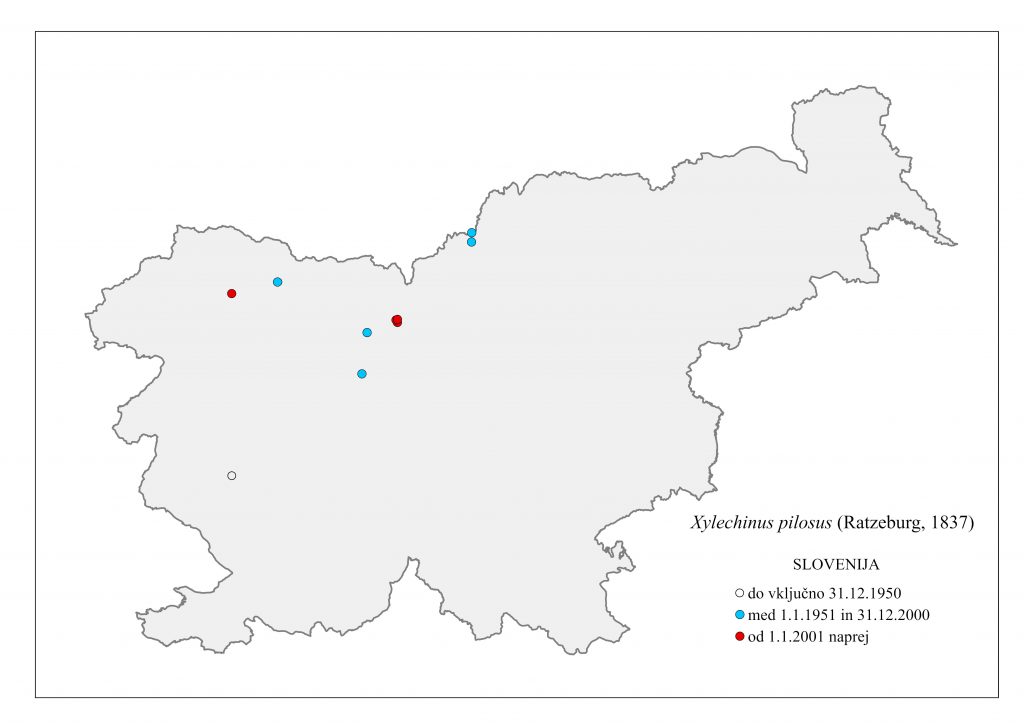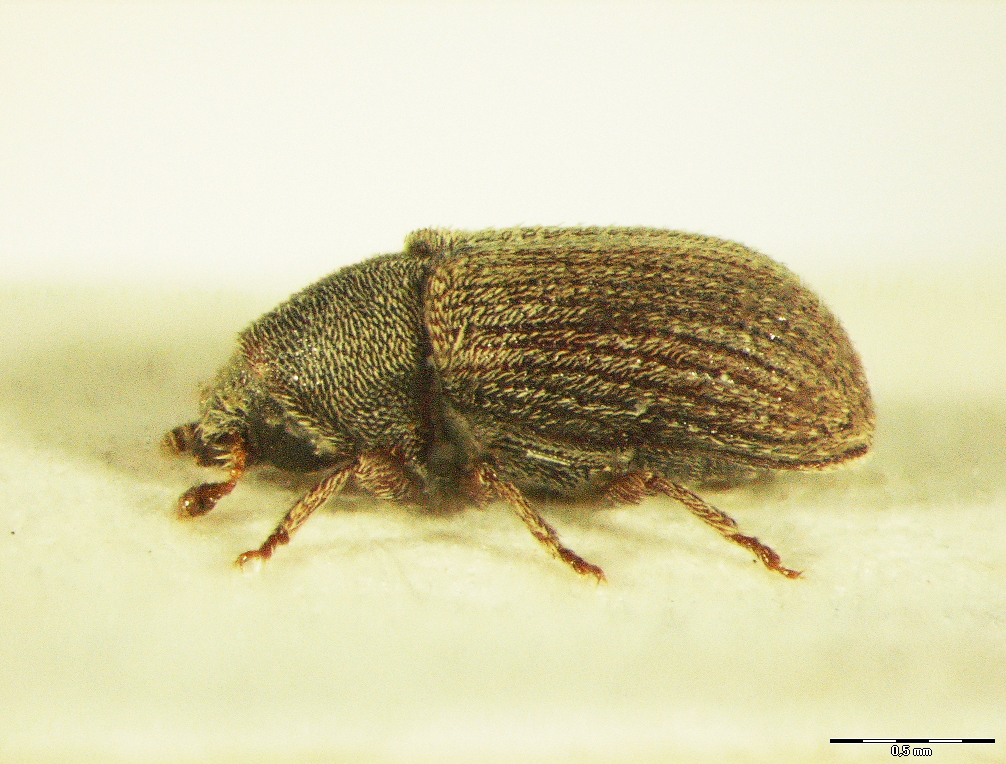10.01. Xylechinus pilosus (Ratzeburg, 1837)
Presence
E: AU BE CT CZ DE EN FI FR GB GE GR HU IT LA NR NT PL RO SK SL SV ST SZ UK
A: ES FE HEI JA JIL KZ MG NC SHA WS XIN
Figure 46: Xylechinus pilosus, dorsal, lateral (Photo: Maja Jurc)
Older catalogs and keys – citations of name
Siegel 1866: Dendroctonus pilosus Rtzb.; Grüne 1979: X. pilosus (Ratzeburg, 1837); Freude, Harde, Lohse 1981: X. pilosus Ratzeburg; Pfeffer & Knížek 1993: X. pilosus (Ratzeburg, 1837); Pfeffer 1995: X. pilosus (Ratzeburg, 1837).

Figure 47: Xylechinus pilosus, distribution map according to historical and recent data
Ecology and presence in Slovenia
The species occurs in central, northern and eastern Europe, Siberia and Asia. Siegel (1866) states that the species is “rare in Carniola, living together with Dendroctonus micans”. X. pilosus is mostly found on Picea abies, P. obovata, rarely on Pinus pumila, Larix decidua and occasionally on Abies alba and A. sibirica and Pinus cembra. After 1990, the only recorded sites in Slovenia are in Gorenjska and Koroška, where specimens were trapped at altitudes above 1100 m or in timber storage sites (Figure 47). Monogamous species with annual generation, swarming in May and June. Long asymmetrical biramous transverse tunnel system, long larval tunnels located in the sapwood. Adult length is 2.2-2.5 mm (Figure 46). An unusual species, it inhabits the trunks of dead, severely decomposing trees or recently felled trees. X. pilosus is a secondary saproxyle.


